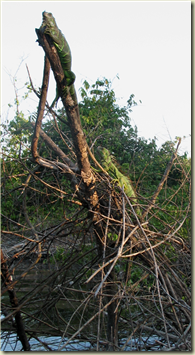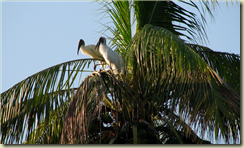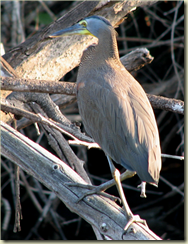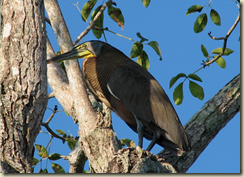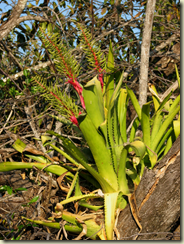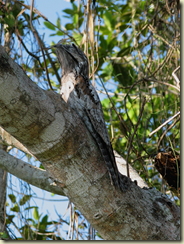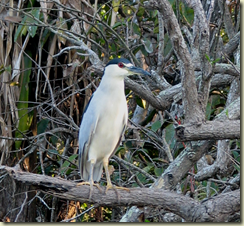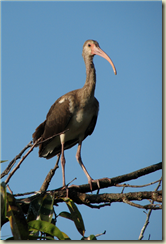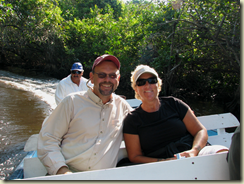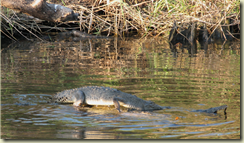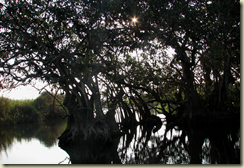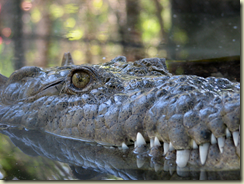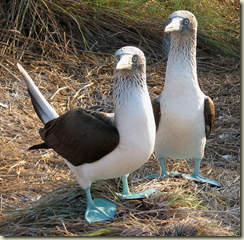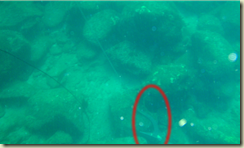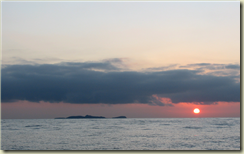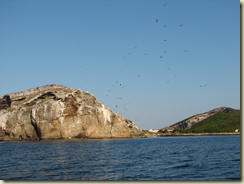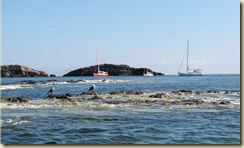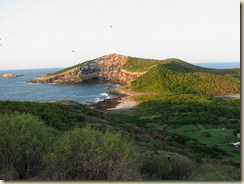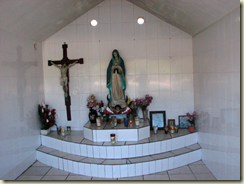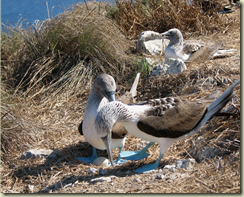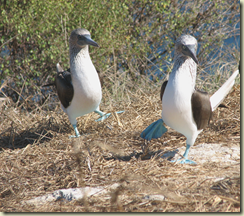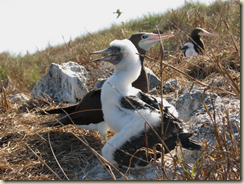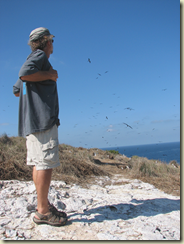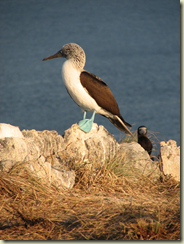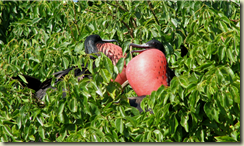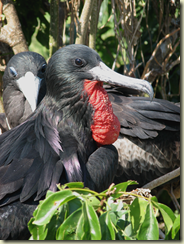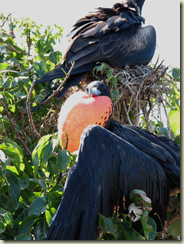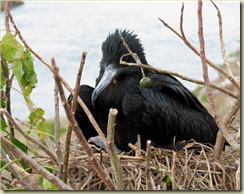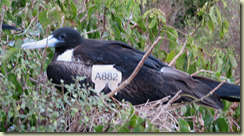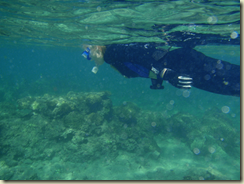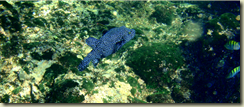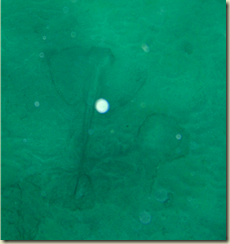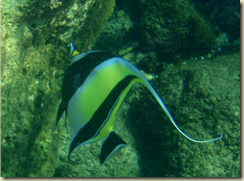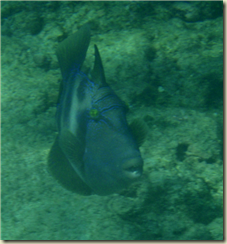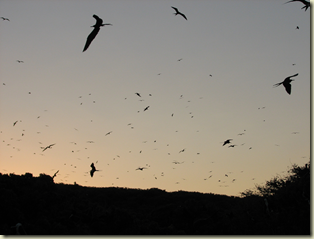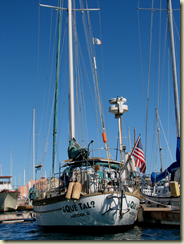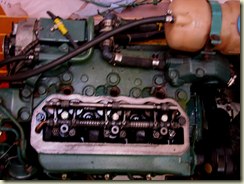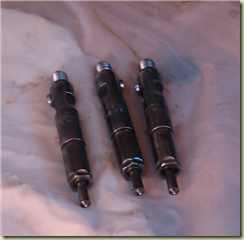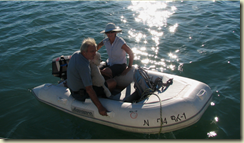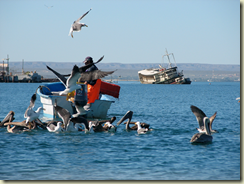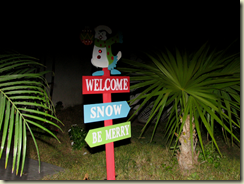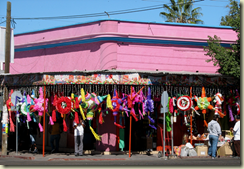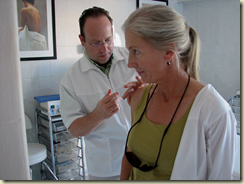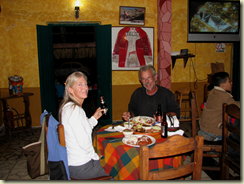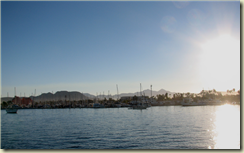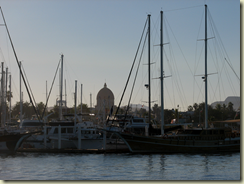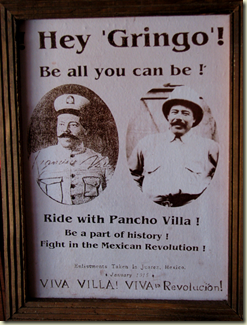
Next leg of our journey was a motor ride from Isla Isabel to San Blas. San Blas was founded around 1530, and in the 1700’s was one of the busiest ports on the west coast, especially as a center of Spain’s trade through the Philippines. It is also the port from which Father Junipero Serra left in 1768 to sail north to San Diego from where he began his work establishing the famed California missions.
Now its a medium sized, fishing and tourism city. We showed up near the outside channel marker and called the Capitania de Puerto on the VHF to get permission to enter the port. After a brief conversation in Spanish we were completely baffled as to whether he said he was working now, meaning we’d need to wait for the OK, or whether he said no, or what? Not wanting to piss off the jefe, we decided to call the marina on the radio and see if they had a slip for us. They did and offered to send out a pilot boat to lead us in over the sand bars and up the river mouth to the marina. The port entrance is notorious for it’s shallow shifting bars. The slip was US$20 a night and the pilot was free – it didn’t take us long to accept.
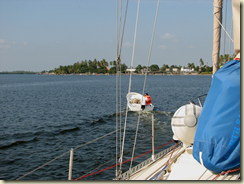 The panga Jimena guiding us in. There wasn’t much swell going in, so crossing the bar was easy. It was mid-tide and the shallowest depths we saw on the bar were 10ft and in the channel 8.5 ft. The panga had us way over to the starboard hand side most of the way.
The panga Jimena guiding us in. There wasn’t much swell going in, so crossing the bar was easy. It was mid-tide and the shallowest depths we saw on the bar were 10ft and in the channel 8.5 ft. The panga had us way over to the starboard hand side most of the way.Like most Mexican towns, the ‘downtown’ section is based around the plaza that makes up a city block, with the old church on one side. Locals walk around it every evening.
 Here’s a major crack in the church bell. These must have showed up after Henry Wadsworth Longfellow wrote his last poem in 1880’s The Bells of San Blas.
Here’s a major crack in the church bell. These must have showed up after Henry Wadsworth Longfellow wrote his last poem in 1880’s The Bells of San Blas. 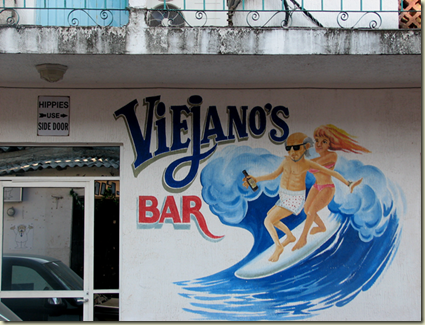
The bar name translates to ‘Old Man’s Bar’, we think the depiction is perfect. (Derrek, check out the small sign in the upper left over the door.)
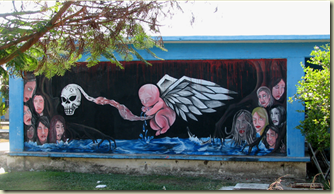 Murals as social commentary are big in Mexico. This one depicts the issue of Maternal and Infant Mortality, on the school building next to the medical center.
Murals as social commentary are big in Mexico. This one depicts the issue of Maternal and Infant Mortality, on the school building next to the medical center.The highlight of San Blas was the panga jungle tour. We headed out with David and Jan on Cuervo at 7am to be the first boat out. The early boats get the best bird viewing. The mangroves support something like 300 different bird species. I’m sure we saw at least 20 different kinds. Oscar, our panga driver, could spot and identify them in the densest brush.
Fishing hawk
Storks
Many many species of herons- we think this is may be a tiger heron
Bromeliads in bloom
A night hawk blending into the tree.
More herons!
Ibis
Jan and David, from s/v Cuervo, with our guide Oscar driving.
We came around the first big turn in the river and there was a small, free-range, crocodile sunning himself.
The mangroves- magote in Spanish
Here’s a big croc sizing us up, just before I jumped in to wrestle him- like the good old Florida days! (Unfortunately Chris was too surprised to get a shot of that…)
San Blas is a great first stop on our way down the Pacific coast of mainland Mexico.
Paul & Chris
